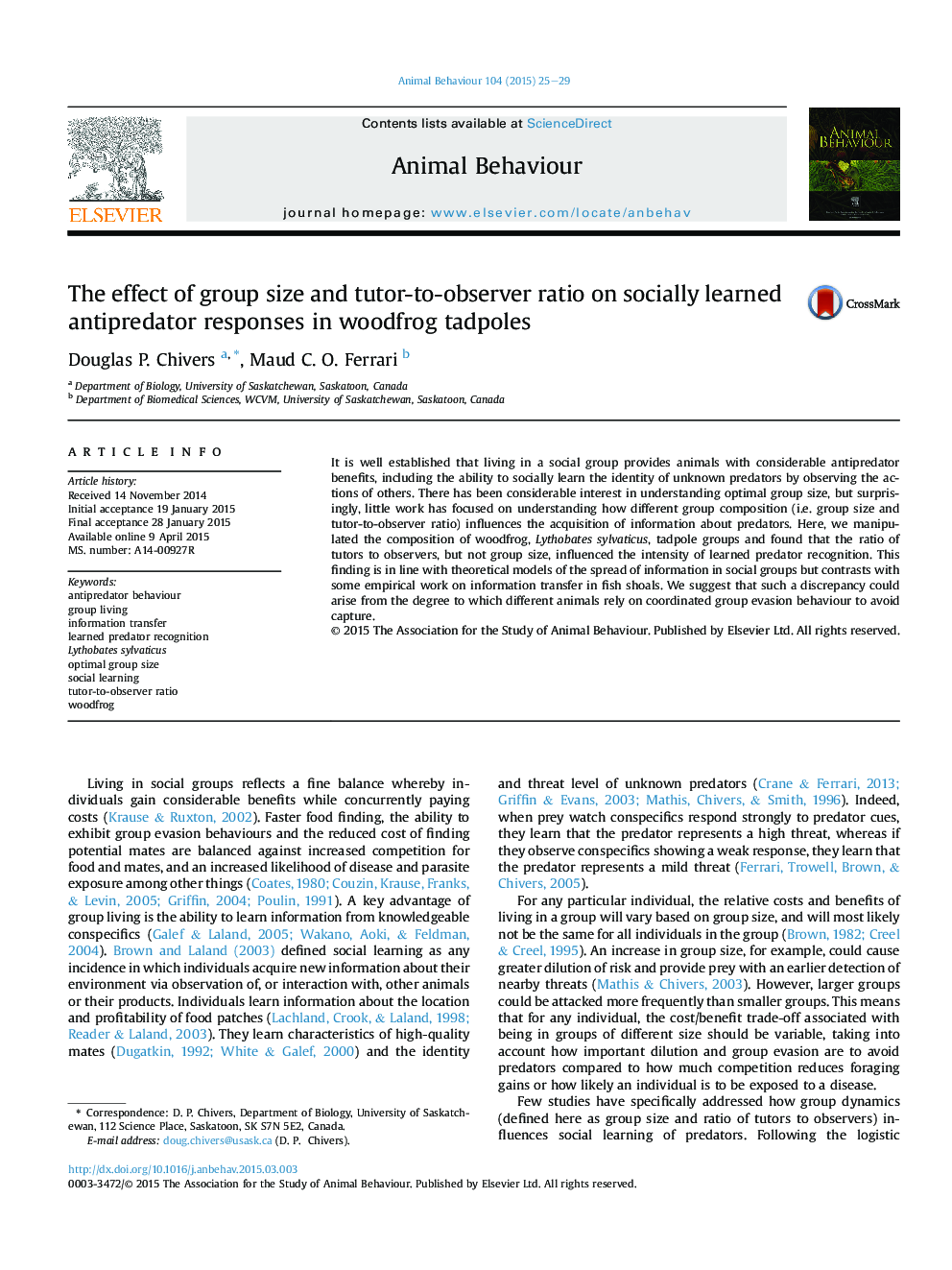| Article ID | Journal | Published Year | Pages | File Type |
|---|---|---|---|---|
| 2416289 | Animal Behaviour | 2015 | 5 Pages |
•Prey learn valuable information about predators from nearby conspecifics.•The importance of group composition in social learning is unclear from previous studies.•We showed group size had no effect on social learning by tadpoles.•Learning was dependent on the ratio of tutors to observers.•The importance of group evasion among different taxa may explain conflicting results in the literature.
It is well established that living in a social group provides animals with considerable antipredator benefits, including the ability to socially learn the identity of unknown predators by observing the actions of others. There has been considerable interest in understanding optimal group size, but surprisingly, little work has focused on understanding how different group composition (i.e. group size and tutor-to-observer ratio) influences the acquisition of information about predators. Here, we manipulated the composition of woodfrog, Lythobates sylvaticus, tadpole groups and found that the ratio of tutors to observers, but not group size, influenced the intensity of learned predator recognition. This finding is in line with theoretical models of the spread of information in social groups but contrasts with some empirical work on information transfer in fish shoals. We suggest that such a discrepancy could arise from the degree to which different animals rely on coordinated group evasion behaviour to avoid capture.
